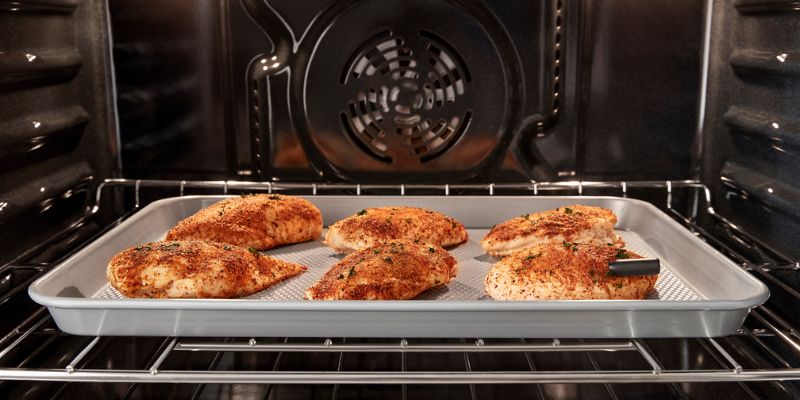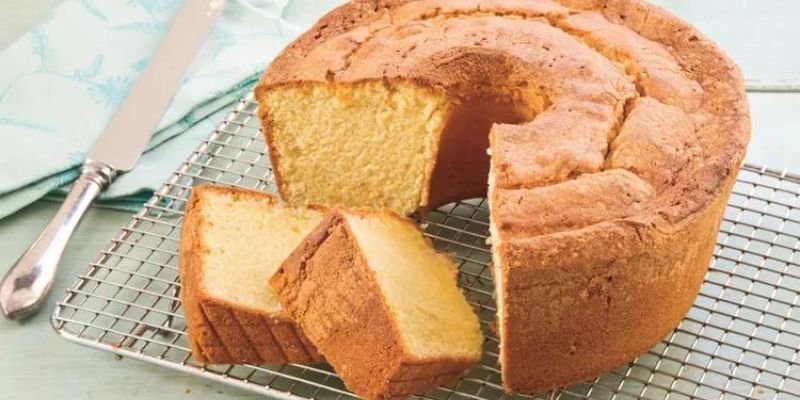Advertisement
Have you ever eagerly anticipated biting into a freshly baked cake only to find it dry and crumbly? You put in the time and effort, carefully measuring ingredients and following the recipe, but somehow end up with a baked good that's more fit for the trash than your taste buds.
But don't lose heart! Overbaking is a common pitfall, and with a few simple tricks, you can say goodbye to dry, disappointing bakes. In this post, we'll explore practical tips to help you nail the perfect bake every time.

Overbaking is the silent saboteur of the baking world, turning moist treats into dry disasters. When baked goods spend too much time in the oven, moisture evaporates rapidly, leaving you with a product far from the soft, tender texture you aimed for.
The loss of humidity affects not just texture but also dulls flavours, resulting in a bland taste that fails to showcase your carefully chosen ingredients. Many bakers need to realize it before falling into the overbaking trap. It's easy to get distracted or second-guess yourself, leaving creations in the oven "just a few minutes longer" to be safe.
However, those extra minutes can make all the difference between perfection and disappointment. With the proper knowledge and techniques, you can recognize when your baked goods are done just right, consistently producing perfectly moist and irresistible treats.
Mastering the art of perfect baking requires more than just following a recipe. It's about understanding the subtle cues and techniques and consistently producing delicious results.
By implementing the following tips, you'll be well on your way to preventing overbaking and ensuring your baked goods come out soft, moist, and irresistible every time. Let's explore these game-changing strategies that will transform your baking experience.
One of the simplest yet most effective ways to prevent overbaking is to become best friends with your kitchen timer. As soon as your cake, cookies, or bread goes into the oven, set that timer immediately. It's easy to get distracted by other tasks or lose track of time, but a timer keeps you accountable and alert.
While following the recipe's baking time is crucial, it's equally important to start checking your baked goods a few minutes before the recommended time. Every oven behaves differently, and humidity and altitude can affect baking times.
By checking early, you give yourself a buffer to catch your baked goods at their peak of perfection. Remember, it's always better to check too early than too late; you can always add more time, but you can't undo overbaking.
Oven temperatures can vary wildly from what the dial or digital display shows, sometimes by as much as 50 degrees or more. This discrepancy can wreak havoc on your baking, turning what should be a perfectly timed bake into an overbaked disappointment.
Try the humble oven thermometer – a small investment that can revolutionize your baking game. Placing this handy tool in your oven gives you an accurate read on the actual temperature. This knowledge allows you to adjust accordingly, ensuring your oven is at the temperature your recipe calls for.
If you discover your oven runs hot, you can lower the temperature or shorten baking times. Conversely, if it runs cool, you can compensate by increasing the temperature or extending baking times slightly.
Developing a keen eye for the visual signs of doneness is an invaluable skill in preventing overbaking. While timers and temperature gauges are helpful, nothing beats the ability to read the subtle cues your baked goods provide.
For cakes, look for edges that have just started pulling away from the pan's sides and a top that springs back when lightly touched. Cookies should have a golden brown edge but still look slightly underdone in the centre - they'll continue to set as they cool.
A hollow sound is a reliable indicator of doneness with bread when tapped on the bottom. For brownies, a slight crust forming on top with a centre that doesn't jiggle when gently shaken usually signals perfection.
Remember, most baked goods will continue to cook slightly after being removed from the oven, so it's often better to err on the side of underbaking rather than overbaking. You'll develop an instinct for these visual and tactile cues with practice, leading to consistently perfect results in your baking endeavours.
Allowing your baked creations to rest after coming out of the oven is a crucial step often overlooked. During this resting period, magic happens inside your treats. The residual heat cooks the centre gently while moisture redistributes evenly throughout.
This process, carryover cooking, helps achieve the perfect texture without risking overbaking. Let cakes and quick breads cool in the pan for 10 minutes before transferring to a wire rack. This short rest can distinguish between a moist, tender crumb and a dry, disappointing slice.

Even seasoned bakers can fall prey to mistakes that result in dry baked goods. One frequent reason is using the wrong oven temperature. It is too high, and the outside cooks too quickly while the inside remains underbaked, leading to an overcompensation that dries out the whole treat.
Overmixing is another silent killer of moisture in baking. It develops too much gluten, resulting in harsh, dry textures. Lastly, using old or improperly stored ingredients, especially leavening agents like baking powder, can lead to poor rise and dense, dry outcomes.
With these tips to prevent overbaking, you're ready to create perfectly moist and delicious baked goods every time. Remember, timing is everything; use that timer religiously and start checking early.
Trust your oven thermometer for accurate temperatures, and remember to let your treats rest after baking. Why not put these tips into practice with your next batch of cookies or that cake you've been meaning to bake?
The difference will be evident in every soft, moist bite. Happy baking, and here's to never serving a dry cake or crumbly cookie again!
Advertisement